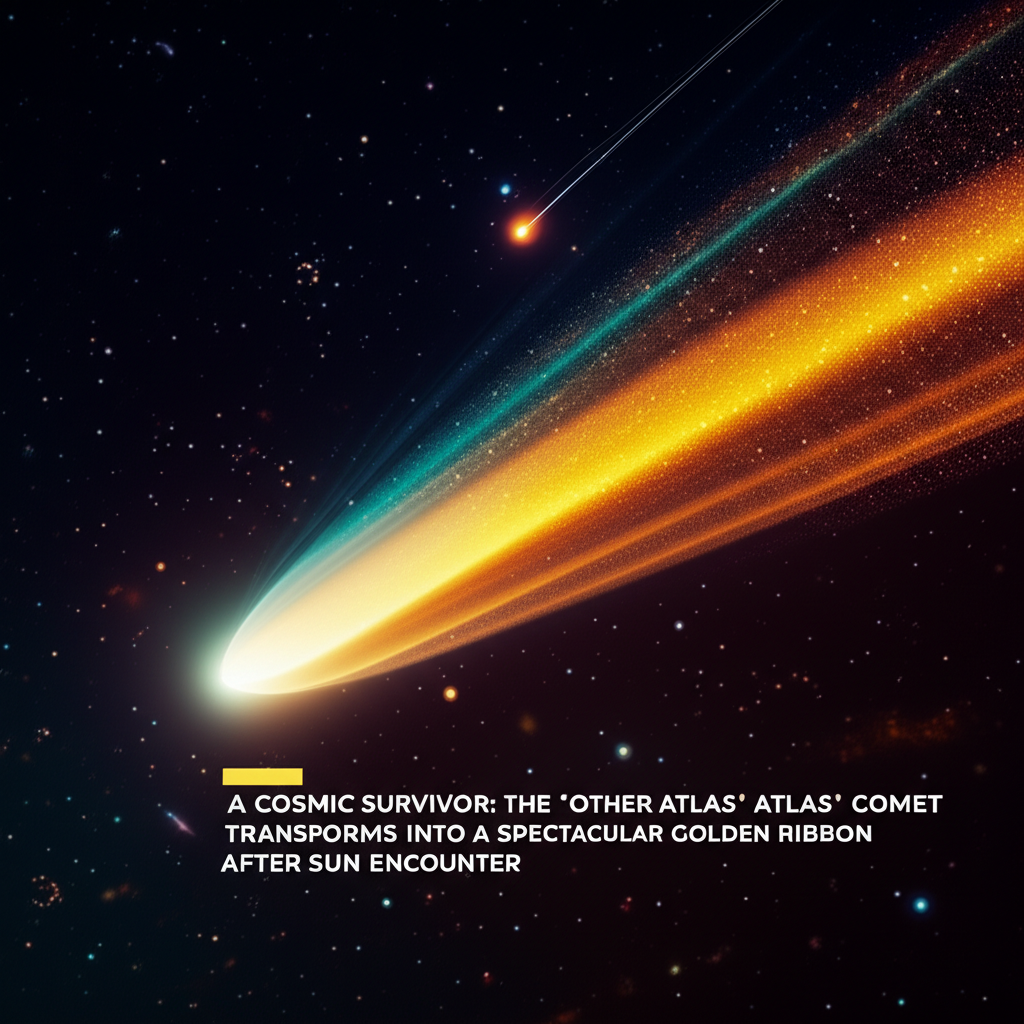A Cosmic Survivor: The 'Other ATLAS' Comet Transforms into a Spectacular Golden Ribbon After Sun Encounter
Defying predictions, this new comet puts on an incredible post-perihelion show.
The vastness of space continues to deliver breathtaking surprises, and a recently discovered comet, affectionately known as 'the other ATLAS,' has just given astronomers a spectacular show. After a perilous close encounter with our Sun, this icy traveler has emerged not broken, but transformed, revealing itself as a magnificent 'golden ribbon.' This stunning display was captured in new images, delighting experts who had largely predicted its demise.

Image source are from Unsplash (Photo by Mehebub Alam (Mehebub Alam) on Unsplash)
Defying the Fiery Gauntlet: Surviving Perihelion
Comets are often described as 'dirty snowballs,' icy bodies that heat up and release gas and dust as they approach the Sun. The closest point in their orbit to the Sun is called perihelion. For many comets, this intense solar radiation and gravitational stress prove too much, leading to fragmentation or complete disintegration.
When this particular ATLAS comet was first discovered, its trajectory suggested a very close brush with our star, prompting concerns that it might not endure the fiery ordeal. Yet, against the odds, it not only survived but seems to have flourished, shedding material in an even more dramatic fashion, giving rise to its new 'golden ribbon' appearance. This resilience offers invaluable insights into the composition and structural integrity of comets that originate from the distant reaches of our solar system, or perhaps even beyond.

Image source are from Unsplash (Photo by Mehebub Alam (Mehebub Alam) on Unsplash)
The Allure of the 'Golden Ribbon'
The description 'golden ribbon' refers to the comet's dramatically elongated and vibrant tail. This visual spectacle is a result of the Sun's heat causing the comet's ices to sublimate and release dust and gas, which are then pushed away by solar wind and radiation pressure. The 'golden' hue likely indicates a specific composition of dust grains or ionized gases, reflecting sunlight in a particular way that creates this stunning effect.
Astronomers will be meticulously analyzing the light spectrum from this tail to understand its precise chemical makeup. Such analysis can tell us about the conditions in the deep space where the comet originated, providing clues about the early solar system or even other star systems, if this comet proves to be interstellar (though it's distinct from 3I/ATLAS, another recent interstellar visitor). The sheer brilliance and unexpected shape make it a truly captivating object for both professional and amateur sky-watchers.

Image source are from Unsplash (Photo by Mehebub Alam (Mehebub Alam) on Unsplash)
The Importance of 'ATLAS' Comets
The acronym ATLAS stands for Asteroid Terrestrial-impact Last Alert System, a robotic astronomical survey system designed to detect objects that might pose an impact threat to Earth. While this comet is not currently predicted to impact Earth, the ATLAS system's wide-field surveys are incredibly effective at discovering new comets and asteroids, earning several of these objects the 'ATLAS' designation. Each new discovery provides a fresh opportunity to study these cosmic wanderers.
The survival and subsequent radiant display of 'the other ATLAS' comet highlight the unpredictable and dynamic nature of cometary physics. It serves as a valuable case study for understanding how these fragile objects interact with stellar radiation and gravity, contributing to our broader knowledge of the solar system's evolution and the diverse array of celestial bodies within it.





